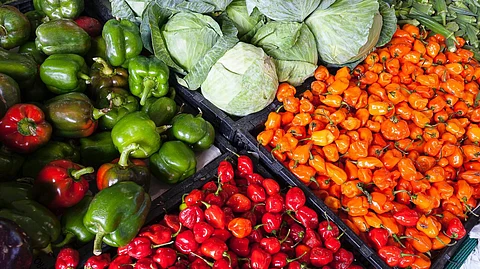
- Home
- Live Blog
- Breaking News
- Top Headlines
- Cities
- NE News
- Sentinel Media
- Sports
- Education
- Jobs

Packaging plays the crucial role in brand building of food products and bulk transportation from factory gate to retail markets. Extension of shelf life of food products is another critical factor that influences industrial design of packaging. Cutting down cost is the top priority for any business entity, and keeping the cost of packaging at the minimum is essential for increasing profitability and commercial sustainability. Plastic now dominates over other packaging materials in the food industry because it comes cheaper, but consumers in India, as in other countries, have reasons to worry about the health risk from contamination of microplastics in packaged food they consume. Various observations by the Parliamentary Standing Committee on Chemicals & Fertilisers regarding ill-effects of plastic and nanoplastic on human health in one of its latest reports have sounded the alarm bell on the consequences of prioritising industrial profits and sustainability over public health. The committee notes with concern that 60% of food containers in the country have Bisphenol A (BPA), a chemical used in manufacturing plastic which causes not only reproductive and fertility issues but also cancer. The report highlights that a preliminary study conducted by the Indian Council for Medical Research (ICMR) on rats exposed to BPA and Bisphenol S (BPS) chemicals used in manufacturing plastic found that there were serious ill effects of said exposure on rats to the extent that their metabolic and reproductive functions were altered. It has become an urgent necessity, as recommended by the parliamentary panel, to conduct a bigger study on animals and humans for validating the findings from the preliminary study on rats. The committee notes in its report that metabolic syndromes like obesity, reproductive and fertility issues, and cancer may be linked to the consumption of microplastics. Apart from these risks, studies have shown microplastics being found in the human placenta, indicating widespreadmigration of plastics in the human body. Findings from the study commissioned by the Food Safety Standards Authority of India (FSSAI) titled “Micro- and Nano-plastics as Emerging Food Contaminants: Establishing Validated Methodology and Understanding the Prevalence in Different Food Matrices” will be crucial to arrive at a scientific conclusion about the gravity of microplastic contamination in our food. While the level of microplasticcontamination will be known only after completion of the study, enforcement of the regulations included in the Food Safety and Standards (Packaging) Regulations, 2018, remains crucial to reduce harmful impact on human health from plastic food packaging materials from the use of compromised/substandard quality of food-grade plastic. The regulations mandate that any material which comes in direct contact with food or is likely to come in contact with food and is used for packaging, preparation, storing, wrapping, transportation and sale or service of food shall be of food-grade quality. Licensing Regulation under the Food Safety and Standards (Licensing and Registration of Food Businesses) Regulation also specifies that the storage instructions on food packaging should be followed by the Food Business Operators (FBOs) at all stages in the food supply chain. The Parliamentary panel’s observation that the FSSAI has failed to play a substantive role in the implementation of the Food Safety and Standards (Packaging) Regulations, 2018, and the Food Safety and Standards Act, 2006, which were not enforced effectively and failed to counter the use of compromised and substandard quality of food-grade plastic, calls for effective measures to end the systemic and structural deficiencies in the implementation and enforcement of legal provisions. Building awareness among consumers about the importance of food-grade packaging materials alone cannot make any difference to the prevailing situation if the FBOs continue to violate the regulations by using cheaper and substandard-quality food-grade plastic to cut corners. The primary focus must be on strengthening institutional capacity for enforcement of the regulations. That the enforcement is easier said than done could be seen from the failure to end the menace of Single Use Plastics (SUP) and polythene carry bags of prohibited thickness still circulating across the country. Apart from increasing the environmental hazards, unchecked use of SUPs by street food vendors also poses serious health risks. This calls for prioritising food packaging regulations also on the streets and in other places like hotels and restaurants where food is served, as well as for food supplied by online food aggregators. Strengthening both public awareness and regulatory enforcement simultaneously will have a stronger deterrent effect, with alert consumers serving as the vigilant eyes of the food safety regulator and bringing to its notice the violation of the safety norms. Imparting scientific education about the harmful effect of microplastic can empower citizens to mount pressure on FBOs to use alternative packaging materials. The microplastic contamination in our daily food is a new health hazard, and it is high time for India to set the microplastic threshold limit.